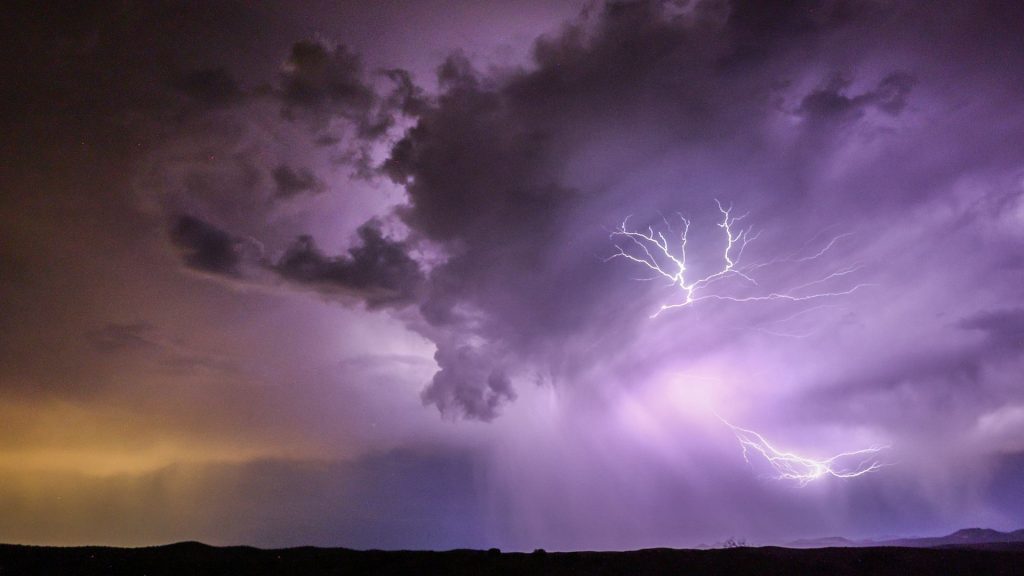As staffing cuts continue at the National Weather Service, can AI fill the gaps?
Ella Greene April 17, 2025 0
- The National Weather Service is facing staffing shortages due to federal buyouts, especially in severe weather hotspots like the Midwest. Experts warn this could impact forecasting just as spring storms intensify.
- Artificial intelligence is being explored as a tool to support forecasting, with machine learning already helping meteorologists analyze data faster and more accurately.
- A recent study found most NWS forecasters are cautiously optimistic about using AI, but emphasize that human expertise remains essential.
Full Story
As staffing cuts continue to hit the National Weather Service (NWS), a new question is emerging: Could artificial intelligence play a larger role in the future of forecasting? The agency expects roughly 300 employees to accept voluntary buyouts tied to a workforce reduction initiative launched by the Trump administration, according to a senior NWS official.
Federal staffing cuts
Meanwhile, nearly 20% of the workforce at the National Oceanic and Atmospheric Administration (NOAA), which oversees the National Weather Service, was cut by the Department of Government Efficiency (DOGE). Previous comments around cuts to NOAA and other government agencies centered on taxpayer dollars spent promoting an agenda centered on climate change.
Experts say those reductions are creating critical gaps, especially in offices responsible for tracking and forecasting severe weather.
Field offices across the Midwest and Plains are feeling the pressure, particularly in cities like Kansas City, Missouri; Omaha, Nebraska; Louisville, Kentucky and Des Moines, Iowa. These tornado prone areas are heading into peak storm season with fewer staff on hand.
According to The Washington Post, these buyouts, which are aimed at downsizing the federal workforce, are now taking a toll, just as spring storms begin to intensify.
Despite the challenges, Tom Fahy, legislative director for the National Weather Service Employees Organization, said staff are still meeting the challenge.
“The mission to save lives has not suffered,” Fahy said. “Communities are still being covered across the country by NWS employees.”
Can AI be used to fill the gaps from lack of staff?
While the U.S. navigates staffing shortages, a tech startup in Hong Kong is testing a different approach, one powered by artificial intelligence. The company, StellerusTech, has developed technology that uses satellite data and street level rainfall forecasts to predict flood locations across Hong Kong in less than three minutes. The system continuously updates in real-time as weather conditions shift.
NOAA already uses AI
Back in the U.S., meteorologists are already using machine learning, a form of artificial intelligence, to analyze large amounts of weather data more quickly and accurately. It helps detect patterns in temperature, wind, pressure and humidity, supporting more precise forecasting.
While AI isn’t replacing forecasters, it’s becoming a valuable tool to support their work. NOAA has even launched the Center for Artificial Intelligence to expand its use and study how it can enhance environmental science and weather prediction.
As the NWS cuts back on programs like weather balloon launches due to staffing shortages, reducing a key source of upper atmosphere data, AI may help bridge the gap.
A study published in the American Meteorological Society surveyed 29 NWS forecasters between October 2021 and July 2023. Most said they’re open to using AI, particularly machine learning, to support their work, but emphasized that human judgment remains critical in delivering life-saving forecasts.
Related Stories
Ella Rae Greene, Editor In Chief
Ella Greene
Ella and the staff at Clear Media Project (CMP) curate these articles.
Unless otherwise noted CMP does not write these articles.
The views, thoughts, and opinions expressed in the articles published on this blog belong solely to the original authors and do not necessarily reflect the views of the blog owner. The blog owner does not claim ownership of the content shared by contributors and is not responsible for any inaccuracies, errors, or omissions.
All rights and credits goes to its rightful owners. No Copyright Infringement is intended. If you believe any content infringes on your rights, please contact us for review and potential removal.





